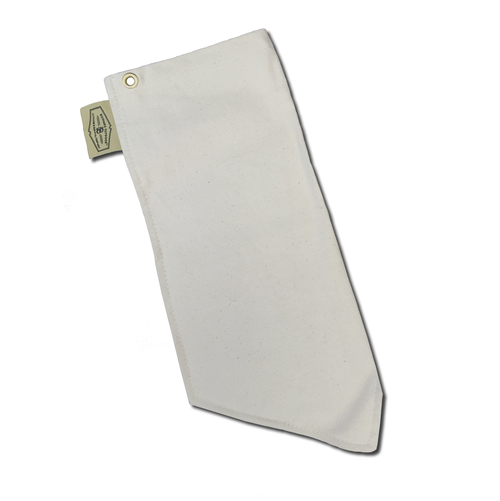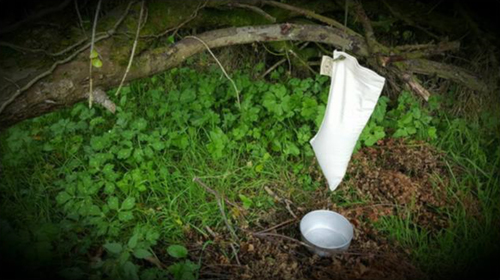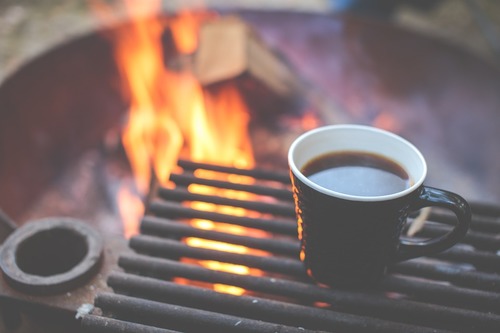
Before we begin, this article is not designed as an in-depth method of water purification – it’s intended as a guide on how to use and where to obtain Millbank Bags – an outdoor essential for bushcrafters and survivalists that these days is somewhat overlooked.
When we think of filtering or purifying water it seems to be a concept that many people believe to be something that is important only in far-flung lands of tropical snakes and exotic waters – but the truth is, any ‘wild’ water needs to be cleaned prior to drinking it, whether that it’s the middle of a rainforest, or from a puddle around the corner.
Before we begin, we first need to clarify the difference between filtering and purifying water. Filtering is the first step to clean up drinking water – it removes nasty particles and to a degree some of the impurities, but it is not a step that is taken instead of purification. Purifying the water is vital! The purification of water is what makes is safe for us to drink – either by means of treating it chemically or via the age-old method of boiling it. You need to filter and treat water to make is safe to drink.
Before even considering filtering and purifying water, first of all, look out for a water source that is away from possible containments from chemicals or likely contamination from sewage runoff – ideally as far away from where people reside or work the land.
Before I go into detail of how to use a Millbank Bag, it is important to note that many surplus bags are not safe to use. Millbank Bags are essentially a large sock-like bag which is made of a special material intended to clean water, but instead, many were once commonly used to filter diesel and petrol, among other chemicals, and whilst surplus bags may appear and even smell fine, they often contain unwelcome chemicals that are harmful. Also, there are some newly made bags that are not necessarily safe to use for filtering water despite how they are marketed – particularly if they are coloured. Unless food-safe dyes are used, most coloured Millbank Bags have been dyed and treated with nasty chemicals that will do the complete opposite when helping to make water safer to drink by leaching of nasty toxins into the liquid – not something you want!
I strongly recommend the Boonies Outdoor Millbank Bag – they’re no fuss, simple to use and don’t contain any colouring agents to make them look pretty. You can buy these from various sources online, but this site specialises in them here and will help you stay clear of buying non-genuine ones – Buy Millbank Bags in the UK here.

Once a suitable water source has been found you first need to soak the Millbank Bag until the fibres of the material have swollen with water. Once soaked, fill the bag to within a few inches from the top and then suspend from a tree.
Place a container under the suspended bag and allow it to slowly drip through – by slow, I mean slow! It’s like watching a dripping tap, but this is how it should work, and anything faster would mean that the water if not being filterest correctly.
Some will recommend allowing the first of the collected water to be disposed of due to the contaminated water being on the outside of the bank from the initial soak – but I don’t really see the point in this myself – remember, we’re only filtering the water from larger detritus and not purifying it yet.

Once you have some non-cloudy water you are ready to treat the water before drinking it. This can be done chemically with water purification tablets, but personally, I prefer to boil the water. When you boil water to kill bacteria and parasites the water only needs to reach a rolling boil – you don’t need to continue boiling after this point as you will only lose water by way of the steam.

That’s it! You’re now ready to make a cuppa! I hope that this article was helpful to you.

keith webster on 06/07/18
Wasn't sure if the Millbank Bag still existed as I remember using one 51 years ago as a young soldier on a proficiency course in the Malayan jungle. Very important piece of equipment especially when you think the only water you have at your disposal is running along the jungle floor and shudder to think what foreign bodies it may contain.
calum millbank on 20/05/20
My grandfather developed these with a colleague many years ago. He served in the Army and I like to think that this small and simple device, similar to filtration vessels that have been used for thousands of years before, has helped keep us safe and drawn on natural solutions.